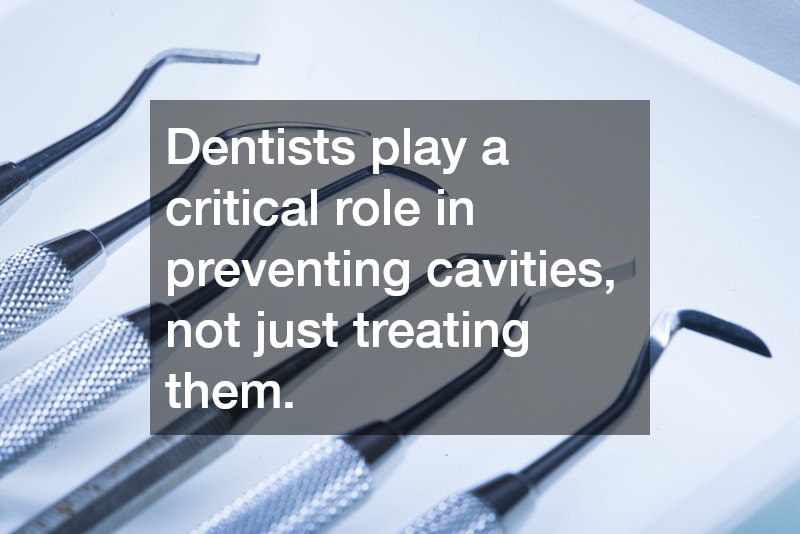Cavities, also known as dental caries, are one of the most common oral health issues worldwide. While they might seem like a minor inconvenience at first, left untreated, cavities can lead to serious complications, including tooth loss, infections, and even systemic health issues. From a dentist’s perspective, understanding how cavities form, their risk factors, and the best preventive measures is essential for maintaining long-term oral health. Cavities do not develop overnight—they are the result of prolonged exposure to harmful bacteria, poor oral hygiene, and dietary habits that contribute to enamel erosion. Early detection and proper care can prevent minor issues from turning into major dental problems.
By educating yourself about cavity formation, symptoms, and preventive strategies, you can take an active role in preserving your oral health and avoiding costly treatments down the line. In this article, we explore the nature of cavities, how they develop, and what you can do to protect your teeth.
What Are Cavities?
Cavities are permanently damaged areas in the hard surface of your teeth that develop into tiny openings or holes. They occur when the enamel, the tooth’s outer layer, begins to break down due to the acids produced by bacteria in the mouth. These bacteria feed on sugars and starches left behind from food and drinks, producing acid as a byproduct. Over time, repeated exposure to these acids can wear away the enamel, leading to the formation of cavities.
A dentist views cavities not just as isolated problems but as warning signs of broader oral hygiene issues. Early detection is key. Small cavities may not cause immediate pain, but they can progress quickly without proper care. Regular dental check-ups allow professionals to identify early signs and intervene before more invasive procedures are needed.
Causes and Prevention of Cavities
Cavities are the result of a complex interaction between bacteria, sugars, and the oral environment. Effective prevention combines good oral hygiene, mindful dietary choices, and regular dental care. Bacterial activity: Acid-producing bacteria in the mouth, such as Streptococcus mutans, attack enamel. Brushing and flossing remove plaque and help keep these bacteria in check. Diet: Sugary and acidic foods and drinks feed harmful bacteria. Reducing their intake and rinsing or brushing afterward lowers risk. Poor oral hygiene: Inadequate brushing and flossing allow plaque buildup, accelerating decay. Maintaining a daily oral care routine is essential. Dry mouth: Saliva neutralizes acids and washes away food particles. Staying hydrated and using saliva-stimulating techniques can reduce cavity risk. Tooth structure and alignment: Grooves, pits, and misaligned teeth trap food and bacteria, making them more prone to decay. Regular professional cleaning can reach these areas. Fluoride use: Fluoride strengthens enamel and makes it more resistant to decay. Using fluoride toothpaste or treatments when recommended helps prevent cavities. Regular dental visits: Routine exams allow for early detection of cavities and professional advice tailored to your oral health needs.
By understanding these factors, individuals can take proactive steps to reduce their risk of cavities and maintain strong, healthy teeth.
Symptoms and Treatment
Cavities may develop silently, especially in their early stages, which is why professional evaluation is crucial. Some signs may indicate their presence: toothache, sensitivity to hot or cold, visible pits or holes, staining on the tooth surface, and discomfort when biting. Not all cavities produce noticeable symptoms, making regular dental check-ups essential.
When cavities do develop, a dentist has several treatment options depending on severity: Fluoride treatments: Can help restore enamel in very early-stage cavities. Fillings: Remove decayed portions and restore the tooth with a filling. Crowns: Strengthen and protect teeth affected by large cavities. Root canals: Remove infected tissue if decay reaches the tooth’s pulp. Extractions: Used when a tooth is beyond repair.
Timely intervention ensures the best outcome and preserves overall oral health.
The Role of Dentists in Cavity Prevention
Dentists play a critical role in preventing cavities, not just treating them. They provide guidance on proper brushing and flossing techniques, dietary recommendations, and preventive treatments such as sealants or professional fluoride applications. Regular visits allow dentists to identify early signs of decay, offer tailored advice, and intervene before issues become serious. This partnership between patient and professional is key to maintaining a cavity-free smile.
Cavities are a common yet preventable dental issue. Understanding how they form, recognizing symptoms, and implementing preventive measures can protect teeth from decay and maintain long-term oral health. Dentists are invaluable in this process, offering early detection, guidance, and effective treatment options.
By maintaining a consistent oral hygiene routine, including brushing at least twice a day and flossing daily, you can effectively remove plaque and reduce the buildup of harmful bacteria that cause cavities. Pairing this with mindful dietary choices, such as limiting sugary and acidic foods, further protects your teeth from decay. Regular dental visits allow professionals to detect early signs of cavities and provide guidance tailored to your oral health needs. Combining preventive habits with professional care ensures a strong, healthy smile, reduces the risk of painful treatments, and supports long-term overall dental wellness.

